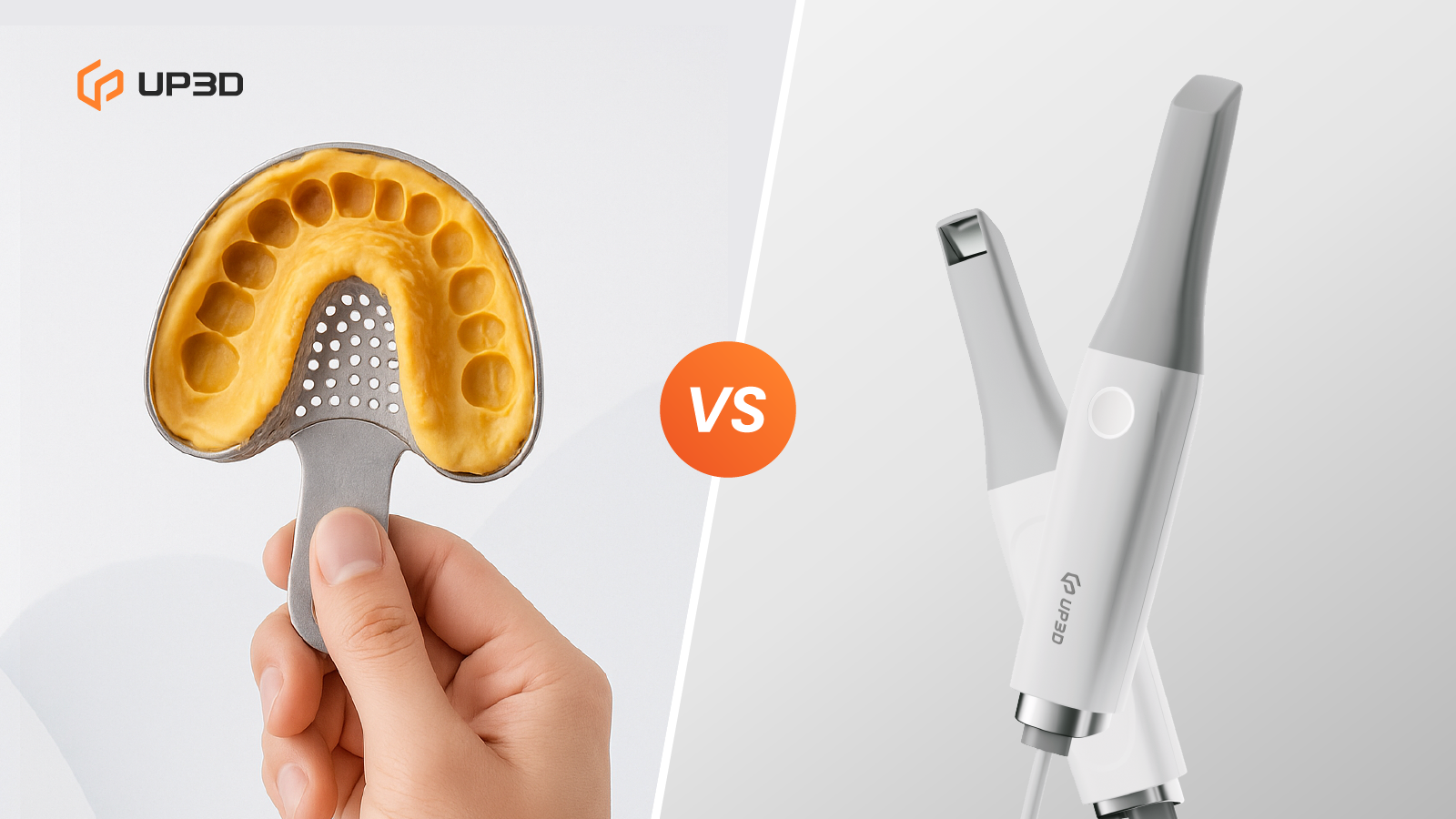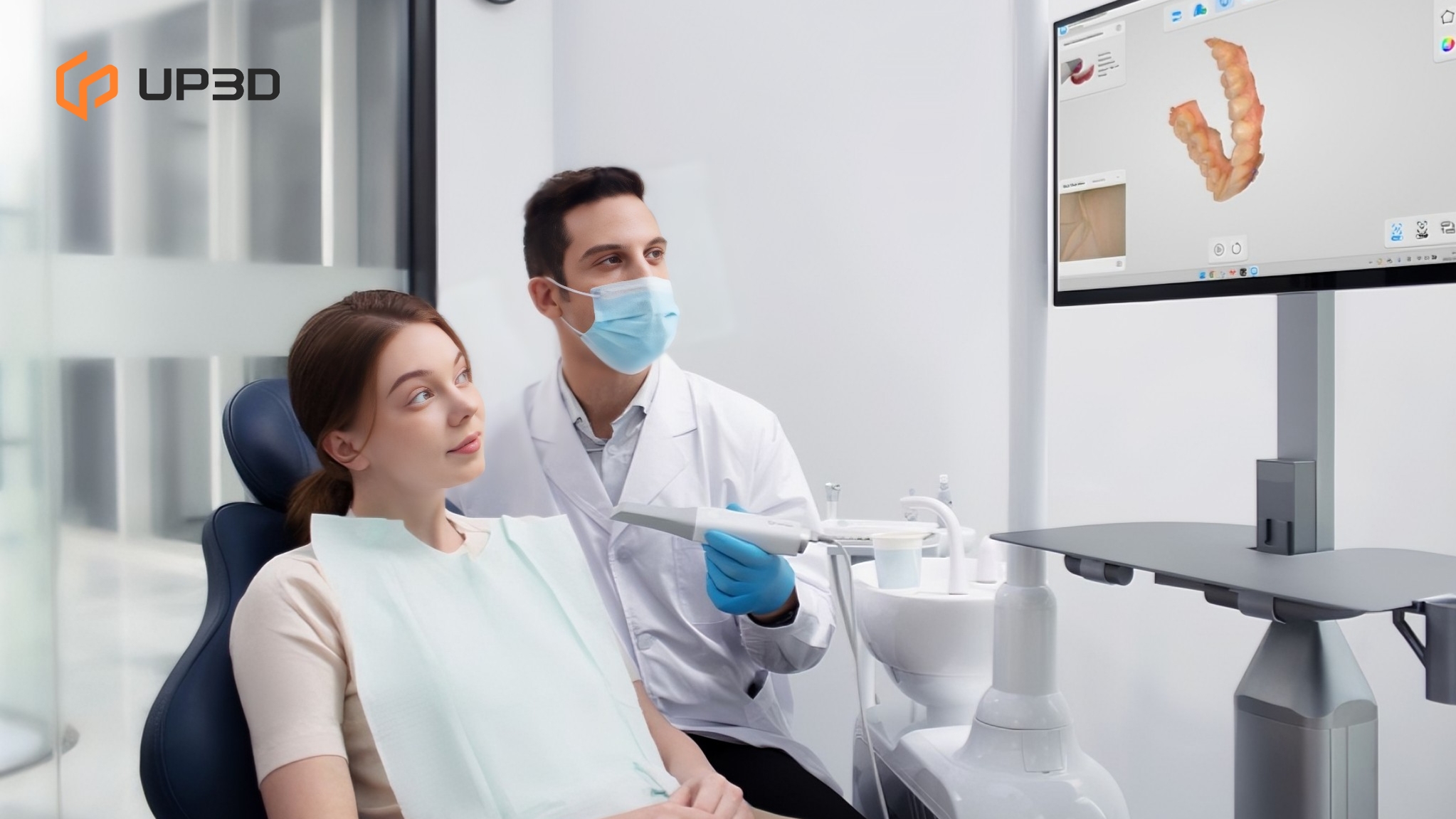For decades, traditional dental impressions have been the foundation of restorative and orthodontic dentistry. Dentists have relied on trays and silicone or alginate materials to capture the shape of a patient's teeth. But as digital dentistry evolves, intraoral scanners are rapidly transforming how we record oral data.
So, is digital scanning really better than traditional impressions? Let's take a closer look at what's driving the shift — from patient comfort to clinical precision — and why more clinics and labs are going digital.

1. Patient Experience: Comfort Comes First
Anyone who's ever had a traditional impression taken knows it's not exactly pleasant. Patients often need to bite down on a bulky tray filled with material for several minutes — not ideal for those with strong gag reflexes or anxiety.
In contrast, an intraoral scanner simply captures the 3D geometry of teeth using a small handheld device. The process is quick, clean, and comfortable, requiring only a few minutes. Patients can breathe and talk normally throughout the scan. For children, elderly patients, and those with sensitive mouths, the difference is night and day.
In short, digital scanning provides a smoother, more positive chairside experience — one that patients are more likely to remember for the right reasons.
2. Workflow Efficiency: From Chair to Design in Minutes
Traditional impressions involve several manual steps: tray selection, material mixing, setting time, disinfection, and transportation to the lab. Every step adds time — and opportunities for errors.
With digital impressions, data capture and transmission happen instantly. Once the scan is complete, the 3D model can be sent directly to the lab or imported into CAD/CAM software for design. No need to pour stone models or ship impressions across town.
For clinics and labs alike, this translates into faster turnaround, fewer remakes, and higher productivity — allowing dental professionals to focus on patient care instead of logistics.
3. Accuracy and Reliability: Digital Wins on Consistency
While traditional materials can distort during removal, transport, or casting, intraoral scanners eliminate many of these variables. Modern scanners capture millions of data points per second, building highly detailed 3D meshes with micron-level precision.
Clinical studies have shown that digital impressions deliver comparable — or even superior — accuracy for single crowns, bridges, and short-span restorations. Digital data also remains stable over time; there's no risk of shrinkage or damage during storage.
When precision and consistency matter most, digital scanning provides a more reliable foundation for restorative success.

4. Sustainability: A Cleaner, Greener Workflow
Traditional impressions produce a surprising amount of waste — disposable trays, impression material, and stone models all contribute to a clinic's environmental footprint. They also require significant physical storage space.
By contrast, digital scans are stored electronically and transmitted instantly. No materials, no plaster, no shipping. It's a paperless and waste-free workflow that aligns with today's push for more sustainable, eco-friendly healthcare practices.
Many clinics find that going digital not only reduces environmental waste but also reinforces their reputation as a modern, responsible dental provider.
5. Cost and Learning Curve: The Trade-Offs to Consider
Adopting an intraoral scanner requires upfront investment — not only in equipment but also in training. Traditional impressions remain cheaper on a per-case basis, which can be attractive for low-volume clinics.
However, when factoring in long-term efficiency, reduced remakes, and improved patient satisfaction, the return on investment becomes clear. Once integrated into daily workflows, intraoral scanners quickly prove their value.
And with modern scanners like UP3D UP610, usability has never been easier — intuitive software, fast scanning speeds, and seamless integration with CAD/CAM systems make the transition smooth even for first-time users.
6. Why the Shift Is Happening — and Why It's Here to Stay
The global trend is unmistakable: dentistry is going digital. Clinics and labs that adopt intraoral scanning benefit from:
-
Faster, more accurate digital workflows
-
Happier patients and stronger trust
-
Reduced waste and overhead
-
Streamlined communication between clinic and lab
-
A future-ready digital ecosystem
Ultimately, the choice isn't just about replacing impression materials — it's about transforming the entire workflow for better outcomes, better experiences, and better business.
Final Thoughts
Both traditional impressions and intraoral scanners have their place. But as technology advances, the advantages of digital scanning are becoming too significant to ignore.
For dental professionals ready to embrace a more efficient and modern approach, an intraoral scanner isn't just a tool — it's a bridge to the future of dentistry.
At UP3D, we're proud to be part of that transformation, offering intelligent, accessible digital solutions that help clinics and labs deliver exceptional care every day.

